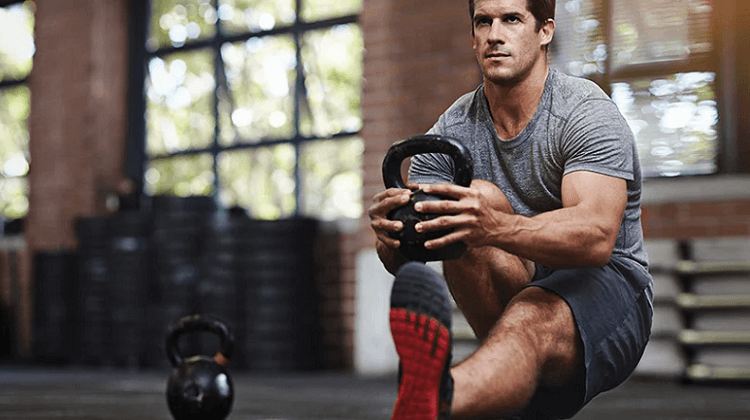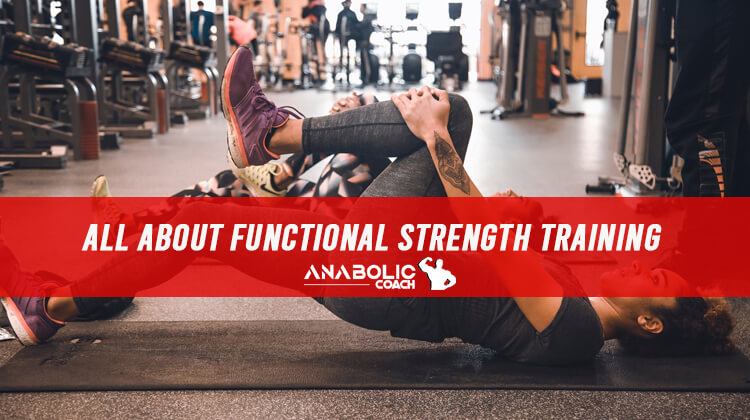As the name implies, functional strength training is a workout routine designed to build your overall strength levels allowing you to perform otherwise grueling workouts and physical activities for much longer as your endurance, stamina, and strength improves.
A typical strength training cycle would involve the lifting of heavy weights, but could also adopt elements of both isometric exercise and plyometric workout routines. The former essentially involves targeted muscle group contraction at varying levels of strength without the angle of the muscle group joints changing during the contraction.
However, with a plyometric workout otherwise called plyos or jump training, you work various muscle groups to the optimum, but in short bursts of high-intensity exercises. Jump training is designed to build up your power by concentrating on improving both your strength and speed.
Strength, weight or resistance training is nothing new, but not everyone knows what it is, how often and why they should try it. Also, it’s not uncommon for bodybuilders to mistake functional strength training for a typical bodybuilding routine.
In this post, we will describe the different types of weight training while offering you tips and highlighting the difference between bodybuilding and resistance training. We will also point out why you should engage in strength training while indicating some key benefits that can be derived from this type of workout regimen.
What are the different types of Functional Strength Training?
There are five main types of functional strength training and these are:
Circuit Functional Strength Training
A circuit weight training program is one that involves a number of exercises lined up one after the
other and must be concluded before a break. These series of exercises will then be repeated with the same intensity after the scheduled rest time.
In circuit strength training, you can repeat the string of exercise routines as many times as you are capable of. You can also adjust your rest time to suit the end goal of your training program. Circuit resistance training can be adopted by beginners who can start off with repeating a series of exercises 2 to 3 times before calling it a day.

Explosive Power Resistance Training
With explosive power resistance training, you train at an optimal intensity level albeit for a short space of time. Explosive power strength training is great for advanced level bodybuilders, but not for beginners who are yet to develop their optimal strength levels. If you’re an advanced level bodybuilder, then engaging in explosive push press or Olympic lifts should suffice.
Hypertrophy Weight Training
It is interesting to note that strength training is capable of promoting muscle growth if this is ultimately your goal. You can achieve this by consistently lifting moderate to heavy weights on a medium to a high number of reps. Consistent weight lifting in this case may involve training for at least 3 to 4 times in a week. Hypertrophy resistance training is also for intermediate to advanced level bodybuilders and not for beginners.
Maximum Functional Strength Training
Another strength training program that is for experienced hands is the Maximum weight training. This resistance training routine is perfect for anyone that has perfected standard form and has built up skeletal muscle endurance levels over time. With this type of functional strength training, you increase the volume of weights that you lift while reducing your repetitions to between 3 to 6 for each set.
Muscle Endurance Functional Weight Training
As a beginner, the muscle endurance functional weight training regimen is great for you. You lift light weights, but rev up your weight lifting volume with a higher sets and reps ratio. This way, you will be building up your skeletal muscle tissues to be more tolerant to being subjected to training involving a greater amount of intensity. Not only will you build strength and endurance, you will also improve your cardio and overall stamina after each strength training cycle.
Why Should You Engage In A Strength Training Cycle?
There are several reasons why you should start off a strength training cycle today. Here are a few worth noting:
Strength Training for Fat Loss
Whenever you engage in high-intensity strength training, you are burning calories and with consistency, strength training for fat loss is very possible as your body relies on fat stores as energy fuel during your strength training program.

Functional Resistance Training for Muscle Growth
As already highlighted, hypertrophy functional strength training can help to promote muscle tissue growth. However, this form of strength training is ideally suited to more experienced trainers.
Strength Training for Strong Bones
If there is one thing that strength training offers all levels of bodybuilders, it is strong bones. You not only build up strength, speed, power, endurance, and stamina, but lifting heavy will strengthen your bone structure and reduce your risk of bone-related injuries during workouts.
Resistance Training for Strength
Of course the principal purpose of engaging in strength training is to build up your arms, legs, and full body strength. By lifting heavy and running high volume sets and repetitions, your body begins to build tolerance to high volume exercise work loads.
Weight Training for Endurance
Consistently lifting heavy weights will build up your tolerance levels to the effects of muscle fatigue caused by lactic acid accumulation in your skeletal muscle tissues during weight training.
How Regularly Should You Run a Strength Training Cycle?
The Office of Disease Prevention and Health Promotion (ODPHP) recommends that persons should run a strength training cycle that involves a minimum of two weight training days in a week.
When running your resistance training, you should never neglect any muscle group. You should try as much as possible to fully engage every major muscle group including those of your arms, chest, core hips, legs, and shoulders.
Note that the time you spend lifting heavy on your training days is entirely up to you. However, you should train for as long as physically possible, that is, you should train until you are unable to complete a set or put in another rep.
Functional Strength Training Beginner Tips
Now that you know what weight training is all about, here are some strength training tips to help you along as a beginner.
Start by lifting manageable weights
While your goal should be to lift heavy, you should also be mindful of not lifting too heavy at the start. Where you are unable to complete a mere 2 reps from say a set total of 8 to 10, it simply means that the weight you are lifting is too heavy. Also, if you find lifting 8 to 10 reps a breeze, then you could increase your lifting weight, as it is most likely too light. You need to lift at a moderately heavy weight where you do not find completing 8 to 10 reps easy, but doable if you push yourself hard.

Gradually increase your lifting weight
You should gradually increase your lifting weight as your strength level builds up. You can increase weights on a weekly basis until you get to a manageable weight.
Always warm up
Never underestimate the importance of a good warm up. You can greatly prevent incidents and accidents leading to injuries when you warm up properly. Never start lifting heavy without warming up, as you increase your risk of incurring minor and major injuries.
Dynamic stretches, birddogs, hip bridges, deadbugs and inchworms are great warm up exercises that you should make a part of your routine before you attempt to lift weights.
Cardio workouts are equally important
Trying to get between 5 to 10 minutes of cardio before your strength training is widely recommended. Cardio helps to raise your heart rate while also promoting the lubrication of all your joints.
Stop once the fatigue really sets in
Resistance training can be very tiring, but that does not mean you shouldn’t push yourself to your optimal strength level while training. However, do not wait until you collapse under the weight of exhaustion before you know you are done for the day.
Functional Strength Training Vs. Bodybuilding
Three distinctive comparisons between resistance training and bodybuilding are as follows:
Strength Goal
The main goal of strength training is to gain strength by lifting heavy. However, the main goal(s) of bodybuilding include muscle building, body shaping, weight loss, recovery, and so on. While strength gains are achieved by lifting heavy, bodybuilding goals can be achieved by lifting light weights.
Limited Sets and Reps
Strength training involves limited sets and reps mainly because your muscle groups quickly make use of energy fuel supplied by oxygen-rich blood flowing into muscle tissues. However, with bodybuilding, the use of lighter weights does not exhaust the supply of oxygenated blood and energy fuel to your muscle tissues. This means that you can engage in more repetitions compared to resistance training.
Lactate Tolerance
Weight training ensures that your muscle groups build a high tolerance level to the muscle tiredness and fatigue experienced during training due to lactic acid buildup in muscle groups. In effect, strength training gives you a greater endurance level compared to bodybuilding with much lighter weights.

Benefits of Running a Strength Training Cycle
There are many benefits that can be gained from strength training. Here is a quick rundown of resistance training gains.
- Improved strength: This is the primary goal of weight training. Your strength is sure to increase with lifting heavy weights.
- Weight loss: Your body is capable of tapping into fat stores in order to meet the energy demands of lifting heavy. This will lead to significant loss of body fat and weight.
- Improved endurance: As you lift heavy during strength training, you build a higher tolerance to the tiring effect of lactic acid accumulation in your muscle tissues. This improved tolerance level ensures that your endurance and overall stamina will be at an optimal level.
- Increased bone density: Lighting heavy during resistance training will increase your bone density and strength. This will go a long way in preventing you from incurring broken bones while training.
- Lean skeletal muscles: With a drop in body fat, your skeletal muscles will be dry and lean from weight training.
- Mental health benefits: By engaging in strength training, you devote your body and mind to your routine. This focus is great for combating mental health concerns like stress, anxiety, and depression.
Final Thoughts
Functional strength training is beneficial on so many levels. On one hand, you will be able to build up your strength and improve endurance levels while on the other hand, you reduce body fat while increasing lean muscle mass. Bodybuilding may involve the goal of body shaping by lifting light to moderate weights, but resistance training focuses on building lactate tolerance levels through the lifting of heavy weights.
Strength training can be embarked upon by all levels of bodybuilding, but you should consult your personal trainer on which type of weight training would be favorable to your fitness and health needs. If you need to chat with a qualified coach today on the strength training program that would work for you, you can do so for free right here.


